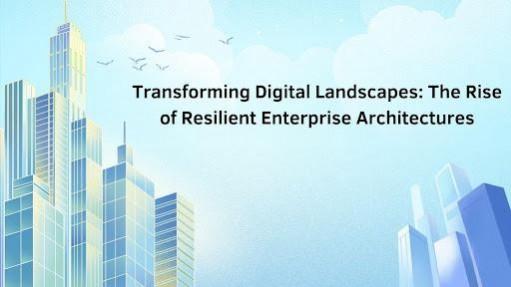
In the rapidly evolving world of technology, Dharga Panduranga Kolla, a distinguished researcher at a leading analytics firm, has unveiled groundbreaking insights into modern enterprise system design. With extensive experience in digital transformation, His comprehensive study explores the revolutionary approaches that are reshaping how organizations build and maintain their technological infrastructure.
The Architectural Revolution
Modern enterprise systems are experiencing a radical metamorphosis, transitioning from inflexible monolithic structures to dynamic, distributed frameworks. This architectural revolution represents a fundamental reimagining of technological infrastructure, enabling organizations to become more agile and responsive. Research demonstrates remarkable outcomes: companies adopting these innovative patterns have achieved a striking 65% reduction in system downtime and a 40% acceleration in deployment frequency. Such transformative approaches are redefining how businesses conceptualize and implement their technological strategies.
Microservices: The Building Blocks of Innovation
At the core of technological transformation lies the microservices architecture, an innovative approach that deconstructs complex systems into nimble, manageable services. Typically spanning 100 to 1,000 lines of code, these compact services empower teams to update and maintain infrastructure with unprecedented flexibility. Organizations embracing this methodology have witnessed remarkable improvements: a 73% enhancement in fault isolation and a 58% reduction in system incident recovery time. This paradigm shift represents a revolutionary strategy for managing increasingly sophisticated technological ecosystems.
The Power of Event-Driven Systems
Event-driven patterns are revolutionizing enterprise architectures by enabling sophisticated asynchronous communication and system flexibility. These cutting-edge systems showcase extraordinary processing capabilities, handling up to 50,000 events per second with remarkably low latencies of under 10 milliseconds. By dramatically reducing system coupling by 40% and enhancing overall system responsiveness by 35%, these innovative architectural approaches are transforming how organizations manage and optimize their technological infrastructure, creating more agile and efficient digital ecosystems.
Scaling New Heights
Scalability has emerged as a critical foundation of modern architectural design, revolutionizing how organizations manage technological resources. Advanced systems now employ sophisticated horizontal and vertical scaling capabilities, enabling unprecedented flexibility in handling computational demands. Through automated scaling policies and cloud-native technologies, these systems can remarkably expand capacity by 300% within seconds, dynamically allocating resources in response to real-time requirements. This elastic approach represents a quantum leap in technological infrastructure management, providing organizations with unprecedented computational adaptability.
Resilience in the Digital Age
Performance optimization has transcended traditional fault tolerance, evolving into a sophisticated approach of comprehensive disaster recovery and business continuity. Modern enterprise systems now deploy robust resilience patterns that dramatically transform operational reliability.
Organizations implementing these advanced strategies have achieved an impressive 85% reduction in system downtime and a 70% mitigation of critical incident impacts. With cutting-edge monitoring solutions enabling near-instantaneous anomaly detection and response within 30 seconds a radical improvement from the previous five-minute industry standard technological infrastructure has become remarkably more adaptive and responsive.
The Future of Enterprise Architecture
The future of enterprise architecture promises unprecedented complexity and sophistication. Projections indicate a transformative landscape by 2025, with 85% of enterprise applications transitioning to cloud-native platforms and 60% embracing serverless architectures. Emerging technologies like artificial intelligence and edge computing are set to revolutionize technological capabilities, promising a remarkable 200% increase in processing power and a 60% reduction in application latency. This evolution represents a fundamental reimagining of computational infrastructure, positioning organizations to navigate increasingly dynamic digital ecosystems.
A Transformative Conclusion
In conclusion, as digital landscapes continue to evolve, the importance of flexible, scalable architectural approaches cannot be overstated. In his concluding remarks, Dharga Panduranga Kolla emphasizes that successful organizations must embrace cloud-native technologies, advanced monitoring solutions, and intelligent operational strategies. The future belongs to those who can adapt, innovate, and transform their technological infrastructure to meet the ever-changing demands of the digital world.















